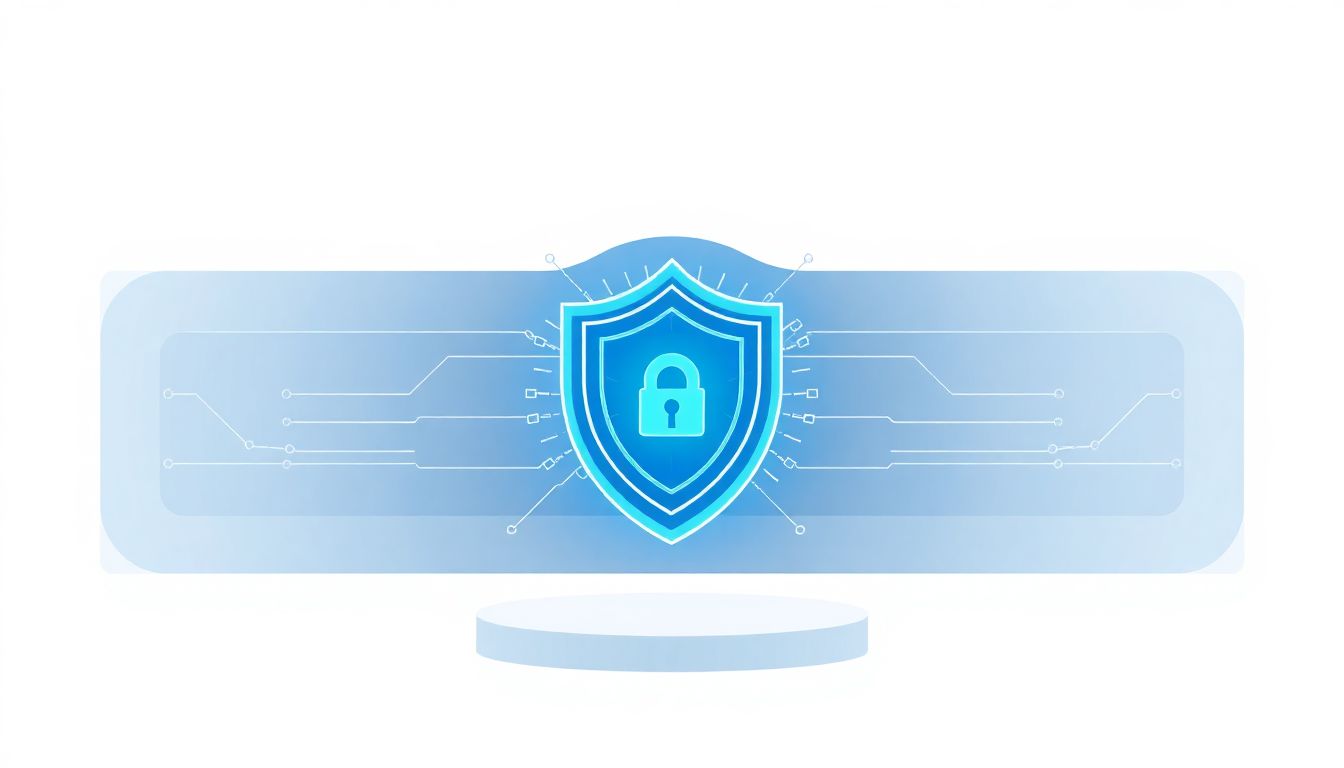Many business owners worry about fraud and how it can hit their bottom line. It’s a real concern, especially with more transactions happening online every day. If you keep reading, you might find out how AI-powered apps can be a game changer in keeping your business safe.
In the next few minutes, I’ll share what these apps can do for you, the top options available in 2025, and simple tips to get started. By the end, you’ll have a good idea of how to use AI to catch fraud before it happens.
Key Takeaways
Key Takeaways
- AI fraud prevention apps are crucial in 2025 because fraud tactics are becoming more advanced, especially with AI-generated scams like deepfakes and synthetic identities. Most banks already rely heavily on these tools to catch fraud early, saving money and building trust.
- These apps analyze data from multiple sources in real time to detect suspicious activity. They use machine learning, biometric checks, device info, and behavioral patterns to prevent scams at different points in customer interactions.
- Top apps like DataDome, Auth0, and SenseTime offer features such as instant detection, behavioral analytics, and identity verification. They help protect against account takeovers, fake identities, and fraudulent transactions—often delivering a smooth user experience.
- Fraud trends in 2025 show a rise in AI-driven phishing and scams, making it essential for businesses to adapt their defenses. Ignoring these trends can lead to increased losses and reputational damage.
- Challenges include data privacy concerns, keeping models updated, costs, and false alarms. Starting small and training staff can help overcome these issues effectively.
- Getting started involves assessing risks, gathering quality data, choosing suitable tools, starting with small implementations, and monitoring results for ongoing improvements.
- Combining AI with human judgment improves accuracy. Setting thresholds for AI alerts allows your team to review tricky cases, reducing false positives and maintaining customer trust.
- To reduce customer friction, tweak AI thresholds and use multi-factor verification. Regular reviews help improve system accuracy and customer experience.
- AI should complement existing security measures, not replace them. Integrating AI with firewalls, anti-malware, and manual checks strengthens overall protection.
- Continuous monitoring of AI performance helps catch new threats early and adjust models. Regular reviews ensure your system remains effective against evolving scams.
- Investing in AI fraud tools saves money by reducing losses, preventing scams, and boosting customer confidence, as most fraud attempts are flagged before causing harm.

Why AI Fraud Prevention Apps Are Essential in 2025
With fraud becoming more sophisticated than ever, businesses need AI fraud prevention apps, or they risk falling behind. In 2025, over half of all fraud involves some form of artificial intelligence, from deepfakes to synthetic identities, making traditional methods less effective.
Most banks and financial institutions now rely heavily on AI tools—about 90% are actively using these solutions to spot scams early and respond instantly. Why? Because AI apps can analyze hundreds of signals in real time, flag suspicious activity, and stop fraud before it even happens.
If your business isn’t on board yet, you’re leaving money and customer trust on the table. The good news? Implementing AI fraud apps can reduce losses, improve customer experience, and stay ahead of emerging threats like AI-generated phishing or account takeovers. And with over 72% of fraud attempts now driven by AI, ignoring these tools isn’t an option anymore.
How Do AI Fraud Prevention Apps Help Protect Your Business?
AI fraud prevention apps work by processing large amounts of data from various sources—such as identity checks, device info, and behavioral patterns—to spot anomalies. For example, they can detect if a login looks suspicious or if a transaction deviates from normal patterns.
They use core technologies like machine learning algorithms to learn from new fraud tactics constantly. When fraudsters try deepfake impersonation or synthetic identities, AI apps recognize the telltale signs faster than humans ever could.
Many platforms integrate biometric verification, device fingerprinting, and real-time monitoring to prevent fraud at multiple points—whether during account creation, login, or transaction. The result? Reduced false alarms, quicker response times, and more secure customer interactions.
For example, companies like DataDome utilize these techs to block fraud instantly, saving businesses significant money and maintaining trustworthiness.
Leading AI Fraud Prevention Apps in 2025 – Features and Use Cases
Some of the top apps today include DataDome, Auth0, and SenseTime. These platforms pack powerful features tailored for different needs.
- Real-time Detection: They analyze hundreds of signals in milliseconds to catch fast-moving scams like AI-generated phishing emails or fake identities.
- Behavioral Analytics: Apps learn what normal activity looks like for each user, flagging anything out of place.
- Identity Verification: Biometric checks, document validation, and device fingerprinting verify user identities to prevent synthetic or stolen profiles.
- Use Cases: Banks defend against account takeovers, e-commerce sites prevent chargebacks, and fintech apps block fraudulent transactions—all while delivering a smooth experience for genuine users.
If you’re looking to add AI fraud prevention to your toolkit, consider platforms like Sellai Tool. They’re experts in facilitating the secure transfer and sale of AI-powered solutions—making it easier to find the right tools for your business.

How AI Fraud Trends Are Shaping Business Risks in 2025
Fraudsters are getting smarter, and AI is both a tool for criminals and defenders.
Right now, more than half of fraud cases involve some form of artificial intelligence, making scams harder to spot with old-school methods.
Recent stats show that AI-driven phishing skyrocketed by 466% in early 2025, with more than 82% of emails now crafted by AI, enabling fraudsters to set up convincing scams up to 40% faster.
Deepfakes, synthetic identities, and AI-powered scams aren’t just buzzwords—they’re real threats that businesses must tackle head-on.
More than 90% of banks now use AI solutions to catch these threats early, but that doesn’t mean your business can afford to ignore these trends.
Anticipate an increase in AI-generated fraud techniques and plan your defenses accordingly—don’t wait until it’s too late.
Common Challenges in Implementing AI Fraud Prevention in 2025
Using AI for fraud protection sounds great, but many organizations hit certain hiccups along the way.
Data privacy concerns top the list—about 61% of businesses worry about how to protect sensitive info while leveraging AI.
Keeping the AI models updated with new fraud tactics can be tricky, especially since fraud techniques evolve faster than software updates.
Smaller businesses might find it hard to deploy AI tools due to cost or lack of expertise.
Plus, there’s always the risk of false positives—which can frustrate customers and hurt trust if not handled carefully.
Address these issues by starting small, focusing on high-risk areas first, and ensuring your team is trained to understand and manage AI tools effectively.
Steps to Get Started with AI Fraud Prevention in Your Business
- Assess Your Risks: Identify which parts of your business are most vulnerable to fraud—be it transactions, logins, or account creation.
- Collect Quality Data: AI works best when it has good, clean data—gather relevant info like customer behaviors, device fingerprints, and transaction details.
- Choose the Right Tools: Look for platforms that offer real-time detection, behavioral analytics, and biometric checks. For example, DataDome or Auth0 are solid options.
- Start Small: Implement AI in one area first—like login security—and expand as you learn what works.
- Train Your Team: Make sure your staff understands AI alerts and knows how to respond appropriately—human oversight is still key.
- Monitor & Optimize: Regularly review system performance, false alarms, and emerging threats, then tweak your settings accordingly.
How to Balance AI with Human Judgment in Fraud Prevention
AI can flag suspicious activity, but human intuition still matters.
Set thresholds so that AI handles obvious cases, while your team reviews tricky alerts—this reduces false positives and builds trust.
Encourage your staff to verify high-risk activities manually and provide feedback to improve the AI’s accuracy over time.
Having a transparent process helps keep customers happy—explain how AI protects their data without feeling invasive.
It’s about creating a team where AI and human judgment work together, not compete.
Dealing with False Positives and Customer Friction
No one wants to be locked out of their account because of a false alarm.
To reduce this, tailor your AI thresholds and give users clear instructions if something looks suspicious.
Consider implementing multi-layer verification—like requiring a biometric check after an AI alert—to keep genuine customers moving smoothly.
Regularly review false positives to fine-tune the system—becoming more precise means happier customers.
Remember, the goal is to catch fraud without turning your users off—striking this balance is key.
Integrating AI Fraud Prevention with Existing Security Systems
Don’t think of AI as replacing your current security measures—it’s more of a boost.
Pair AI tools with your existing firewalls, anti-malware, and manual review processes for a layered defense.
Make sure systems communicate smoothly—integrations should be seamless to avoid gaps in protection.
For instance, link your AI fraud alerts to your CRM or case management tools so that suspicious activity prompts immediate action.
This way, you get faster responses and stronger overall security without overhauling everything at once.
Monitoring AI Effectiveness and Adjustments in 2025
AI isn’t a set-it-and-forget-it solution. Ongoing monitoring is essential.
Track key metrics like false positive rates, detection speed, and overall fraud reduction to see if your AI is hitting the mark.
Be ready to update your models as new fraud patterns emerge—fake identities and deepfakes evolve fast.
Solicit feedback from your team about false alarms or missed scams—it helps improve the system.
Review your AI’s performance quarterly, and don’t hesitate to pivot your approach if you notice gaps.
How AI Fraud Prevention Can Save You Money and Build Trust
Investing in AI might seem costly upfront, but it pays for itself in reduced losses and happier customers.
By catching fraud early, you cut down on chargebacks, fines, and reputational damage.
Plus, automated detection means your team can focus on genuine cases, saving time and effort.
Better fraud prevention also boosts customer confidence—people trust businesses that keep their data safe.
In fact, studies show that 72% of fraud attempts are flagged by AI, preventing scams before they cause real harm.
FAQs
AI apps analyze transaction patterns, identify anomalies, and assess risk levels in real-time. They use machine learning to learn from new fraud tactics and spot signs of fraudulent behavior quickly and accurately.
AI fraud prevention improves detection accuracy, reduces false positives, and reacts faster to emerging threats. It helps businesses protect assets, maintain trust, and lower financial losses associated with fraud.
Consider factors like integration capabilities, detection accuracy, ease of use, support for your industry, and scalability. Comparing features and reading reviews helps select an app suited to your specific business needs.
Start with clear objectives, ensure proper integration with existing systems, train staff on its use, and continuously monitor performance. Regular updates and testing help keep the system effective against new fraud methods.